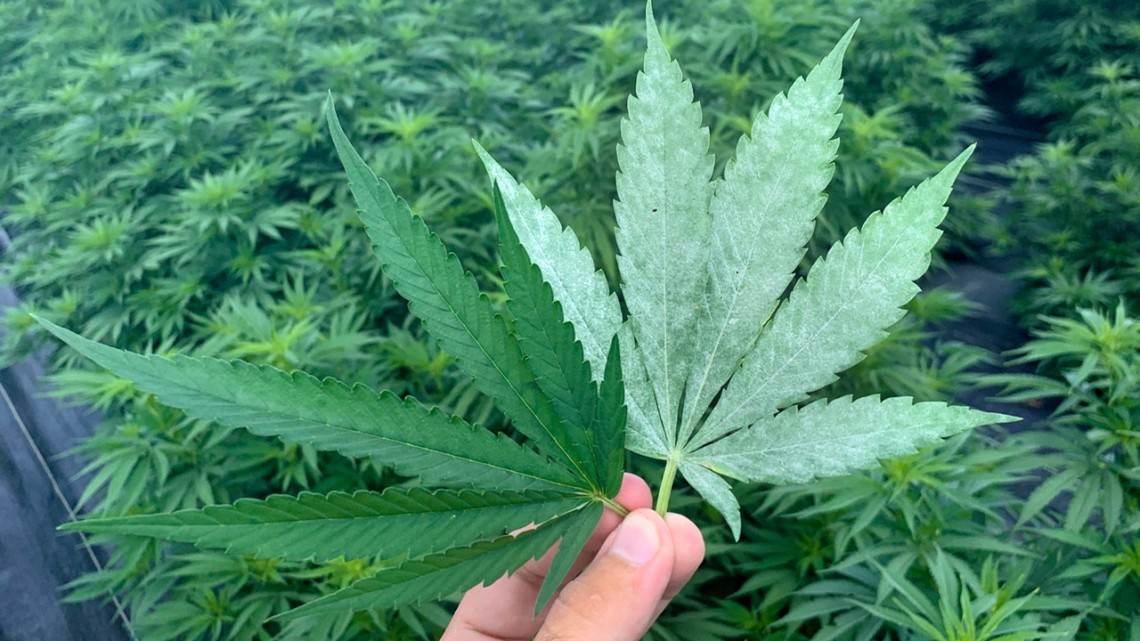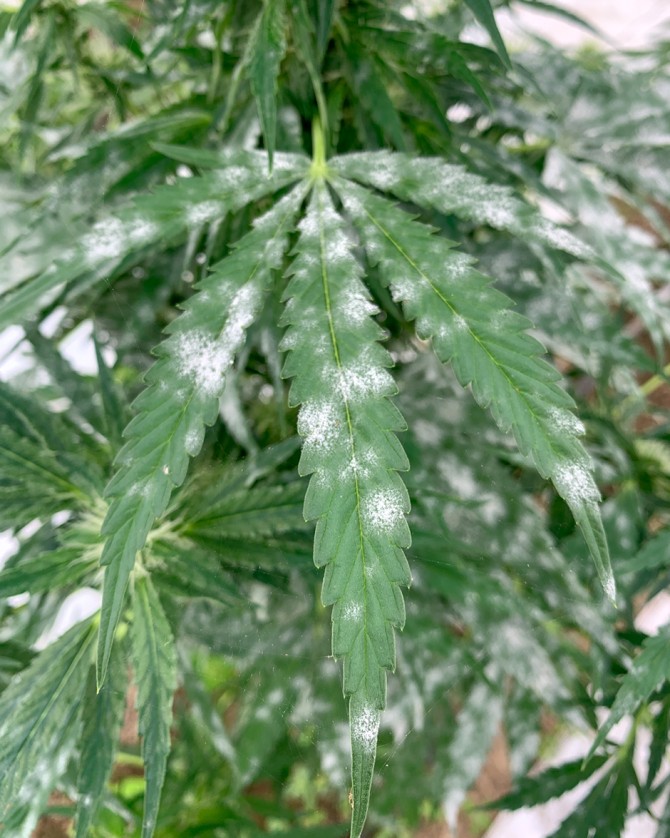
The cannabis sativa plant on the left has a gene that helps it resist powdery mildew; the plant on the right is infected with the fungal disease.
Gene discovery takes aim at hemp nemesis: powdery mildew
By Susan Kelley, Cornell Chronicle
Cornell researchers have discovered a gene in hemp for resistance to powdery mildew – giving the fledgling hemp industry a new tool to combat one of the most prevalent diseases affecting the production of high-cannabinoid Cannabis sativa.
“This discovery is a big step forward in breeding cultivars that are resistant to powdery mildew,” said Larry Smart, a plant breeder and professor in the School of Integrative Plant Sciences in the College of Agriculture and Life Sciences (CALS). “Identifying resistance will result in better overall crop production and quality.”
“It’s a huge advance,” added plant pathologist Christine Smart, professor in the School of Integrative Plant Science in the College of Agriculture and Life Sciences and a co-author on the paper. Members of the labs of both Christine Smart and Larry Smart, who are married, worked jointly on the project.
“Growers, especially for indoor production, put a lot of effort and money into trying to control powdery mildew on their plants,” Christine Smart said. “So having resistant plants will greatly improve indoor production. This gene will also be bred into hemp cultivars for field-grown grain and fiber.”
The paper, “Genetic Mapping, Identification, and Characterization of a Candidate Susceptibility Gene for Powdery Mildew in Cannabis Sativa L.” was published Sept. 26 in Molecular Plant-Microbe Interactions.
The lead authors were George Stack ’19, Ph.D. ’23, postdoctoral associate in the School of Integrative Plant Science, and Ali Cala, Ph.D. ’22.
Powdery mildew is a fungus that affects many plants. Its spores look like white powdery patches on leaves and those spores can very rapidly spread to infect other leaves. The fungus damages the leaf tissues and reduces plant productivity. “It can actually extract nutrients out of each infected cell of the leaf. You won’t have as much photosynthesis happening in the plants, so it’s going to decrease plant vigor, decrease plant growth,” Christine Smart said.
And the mildew stays on the flowers, which lowers the crop’s market value and can significantly reduce crop yields, she added.
The research team identified a hemp cultivar that was consistently resistant to powdery mildew in both natural infections in field trials and in controlled inoculations in growth chambers. The team’s hypothesis was that there was a resistance gene in that line, so Stack made crosses between that line and a susceptible line and planted out a segregating mapping population in the field.
Cala inoculated the field trial plants with powdery mildew, then surveyed the plants for disease incidence, while Stack conducted genetic marker analysis on more than 700 plants in the trial. They found that 25% of the plants were resistant to powdery mildew, while the remaining 75% had varying susceptibility. That data enabled them to map the gene responsible for the powdery mildew resistance.
“We did genome sequencing of the resistant line and compared it with susceptible lines and found a gene mutation that is highly likely to be responsible for the resistance,” Stack said. “We now have molecular markers that can identify that gene for resistance and can be used for selection of breeding lines.”
Hemp researchers can now cross-breed to transfer the resistance gene into other lines – for CBD, grain or fiber – and use the molecular markers to screen for resistant seedlings without having to grow the plants to maturity. If legal, breeders could also introduce the gene into high-THC lines to produce cultivars resistant to powdery mildew.
“We are continuing to try to identify more resistance genes for powdery mildew and characterize the interactions between the gene we identified and other potential genetic resistance factors in order to maximize genetic resistance,” Larry Smart said.
The research was funded by grants from New York state through Empire State Development and from the Foundation for Food and Agriculture Research with matching funds provided by the Scotts Corporation.
Media Contact
Get Cornell news delivered right to your inbox.
Subscribe

